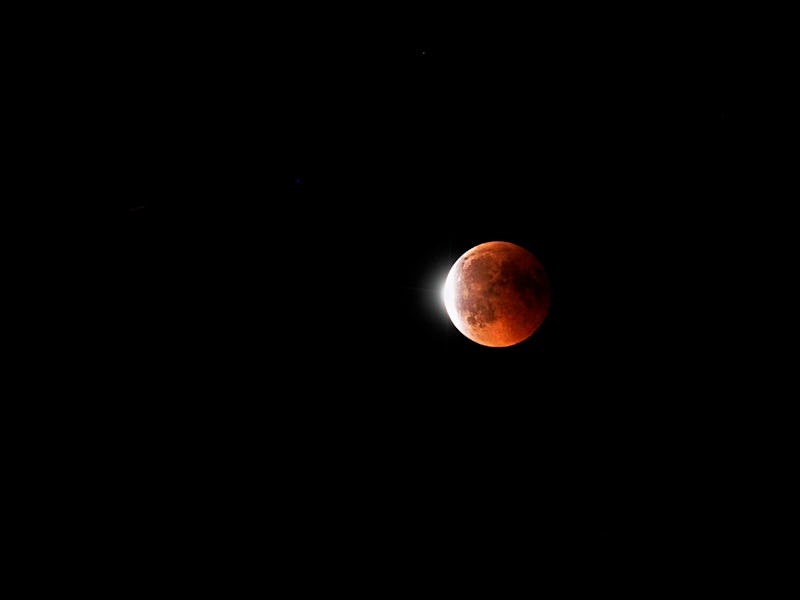January's Total Lunar Eclipse Will Be "Particularly Nice," Says Astronomer
But don't call it a super blood wolf moon.

With a bombastic nickname like “super blood wolf moon total lunar eclipse,” the celestial event happening Sunday night has a lot to live up to. Fortunately, there’s no reason to think it’ll be anything less than spectacular. Beyond its being a supermoon (big and bright!) and a total lunar eclipse (complete darkness!), it’s also going to last for quite a long time.
Rice University astronomer Patrick M. Hartigan, Ph.D., tells Inverse that the event, which begins on January 20 (or 21, depending on where you live) at 10:34 p.m. Eastern on Sunday, will not be over in a flash.
“The total phase on this one lasts 62 minutes, which is pretty good,” says Hartigan. “The maximum is something like 106 minutes as I recall.” The eclipse reaches totality — the moment the moon is completely blotted out — at 11:41 pm. The eclipse reaches totality — the moment the moon is completely blotted out — at 11:41 pm. The eclipse reaches totality — the moment the moon is completely blotted out — at 11:41 pm.
Visibility of this eclipse is greatest in the white areas; shaded areas will see increasingly less.
He says that this eclipse will be “particularly nice” for three reasons: it’s a total rather than a partial eclipse, it has a “reasonable length, so you don’t miss the total phase if you’re busy for 5 minutes or a cloud passes over,” and because in the US, it occurs at a convenient time of the evening.
A “bonus” for American moon-watchers, he adds, is that Monday is a holiday, so kids can stay up late to watch it.
Luckily for Hartigan, Texas skies are expected to be clear on Sunday night, but many Americans elsewhere will miss the eclipse, despite its long duration. A storm threatens to obscure the view for people in the northeast and the on the Atlantic coast. Fortunately, Griffith Observatory in Los Angeles, which is expected to have a great view, has it covered with its live stream of the eclipse on YouTube.
However you enjoy the eclipse, consider omitting its mouthful of confusing nicknames. “Wolf moon” has questionable American Indian roots, as Gizmodo has pointed out, and “blood moon” doesn’t denote much. As Hartigan points out on his website: “No astronomer I know uses this term (at least not when we are talking with each other), as it sounds more at home in a vampire novel. Usually it simply refers to an eclipsed Moon, which appears red because sunlight from all the sunrises and sunsets on Earth are simultaneously visible on the lunar surface.”